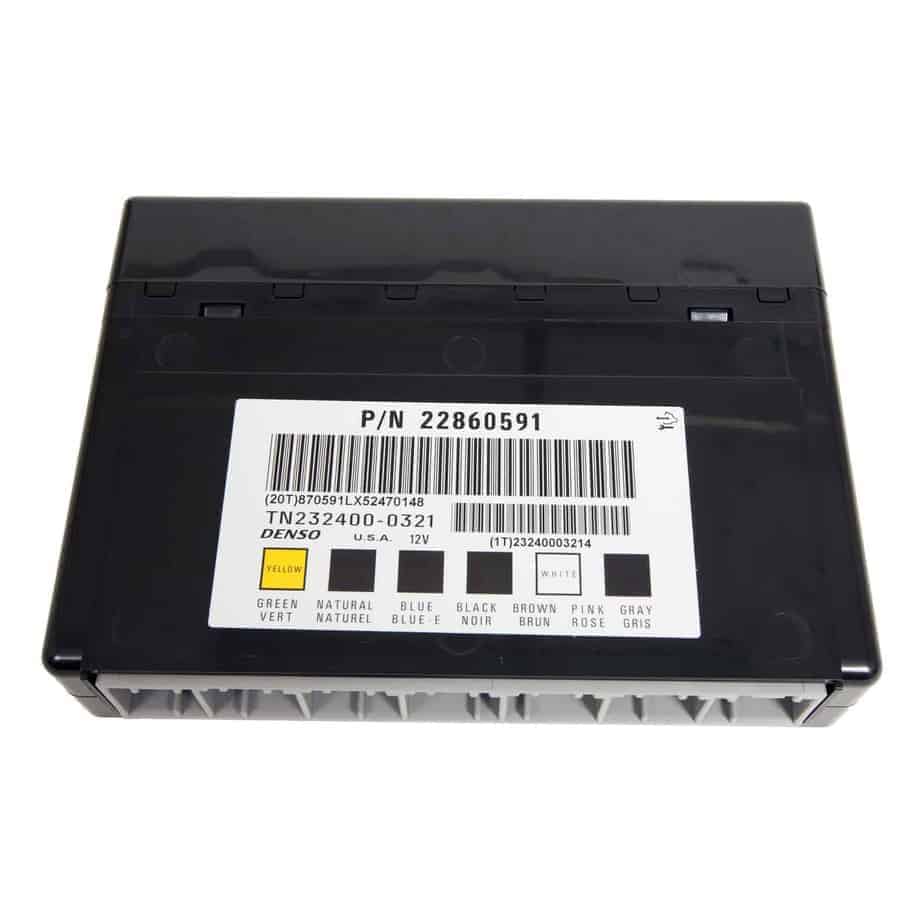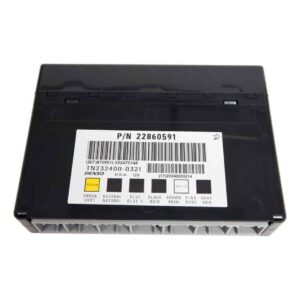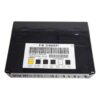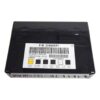Restore Your Vehicle’s Electrical System with a Plug-and-Play BCM
Are you battling frustrating electrical gremlins in your GM vehicle? Flickering dashboard lights, power windows and locks with a mind of their own, or a security system that prevents your car from starting are all classic signs of a failing Body Control Module (BCM). As the central hub for your vehicle’s body electronics, a faulty BCM can cause widespread and confusing issues. Instead of facing a costly trip to the dealership for diagnostics and programming, we offer a simple, reliable, and affordable solution.
This is a direct-fit replacement GM Body Control Module, delivered to your door already programmed to your vehicle’s specific VIN. We handle the complex part, loading the latest GM software updates before we ship. This means no expensive scan tools or dealership appointments are required for programming. You get a part that’s ready for installation right out of the box, saving you significant time and money.
A Technician’s Notebook: The Case of the Haunted Impala
A 2008 Chevy Impala came into my bay with a list of bizarre symptoms the owner couldn’t explain. The radio would turn on and off, the interior dome light would flicker while driving, and occasionally the anti-theft light would flash, causing a no-start condition. The owner had already replaced the battery and checked the main grounds. A scan showed a handful of U-codes (communication errors) but nothing pointing to a single failed sensor. This is a tell-tale pattern I’ve seen hundreds of times. The BCM acts as a network controller. When it starts to fail internally, it sends corrupt data across the CAN bus, causing other modules to act erratically. We installed a VIN-programmed BCM, and every single issue was resolved instantly. It’s often the central culprit for these ‘haunted’ vehicle behaviors.
Is Your Vehicle Showing These Symptoms?
- ✔ Intermittent or non-working power windows, door locks, or mirrors.
- ✔ Erratic instrument cluster behavior, with gauges dropping out or warning lights flashing randomly (like the security or airbag light).
- ✔ Interior or exterior lights that stay on, flicker, or won’t turn on at all.
- ✔ The vehicle’s security system (Passlock/Pass-Key) engaging improperly, leading to a no-crank or no-start condition.
- ✔ Communication-related Diagnostic Trouble Codes (DTCs), such as U0140, U0155, or other U-codes, indicating a loss of communication with the BCM.
- ✔ Problems with the keyless entry or remote start systems.
A Straightforward Guide to Your BCM Installation
- ✔ Safety First: Always disconnect the negative terminal from your vehicle’s battery before starting any electrical work.
- ✔ Locate the BCM: The module is typically located under the driver’s side or passenger’s side of the dashboard, or behind the center console. Consult a vehicle-specific guide for the exact position.
- ✔ Disconnect and Remove: Carefully unplug the electrical connectors from the old BCM. They have locking tabs that need to be depressed. Once disconnected, unbolt or unclip the module from its mounting bracket.
- ✔ Install the New Module: Mount your new, pre-programmed BCM in the same location and securely reconnect all the electrical harnesses. Ensure they click into place.
- ✔ Reconnect and Test: Reconnect the negative battery terminal. Turn the key to the ‘ON’ position and test all body functions—windows, locks, lights, wipers, and radio—to confirm proper operation.
Post-Installation Checks
While our programming handles the critical setup, some vehicles may require a simple relearn procedure after installation:
- Airbag System Sync: If the airbag warning light is illuminated after installation, a technician with a capable scan tool will need to perform the “Setup SDM Primary Key in BCM” function to sync the modules. This is only necessary if the light appears.
- Brake Pedal Position Relearn: On certain models, a brake pedal position sensor relearn may be needed to ensure correct brake light and traction control functionality. This is also performed with a professional diagnostic tool.
Guaranteed Fitment for Your GM Vehicle
This GM Body Control Module is a direct replacement for part number 15093910 and interchanges with the following part numbers: 10382479, 15276271, 15299986, 15819552, 15828601, 15837419, 15872388, 15872421, 15880684, 15921352, 15921353, 15948438, 15948439, 20815898, 20839063, 20864767, 20864768, 20921435, 20921436, 20935349, 22860591, 25826124, 25826125, 25847588, 25847589, 25892622, 25910474, 25934762, 25934763, and 95151084. It is verified to fit a wide range of models including:
- Acadia (2007-2012)
- Avalanche 1500 (2010)
- Caprice (2011-2013)
- Captiva Sport (2012)
- CTS (2008-2013)
- DTS (2006-2011)
- Enclave (2008-2012)
- Equinox (2007-2009)
- Escalade, ESV, EXT (2010)
- Express / Savana Vans (2008-2012)
- G8 (2008-2009)
- Hummer H2 (2008-2009)
- Impala (2006-2013)
- Lucerne (2006-2011)
- Monte Carlo (2006-2007)
- Outlook (2007-2010)
- SRX (2007-2009)
- STS (2010)
- Suburban 1500 (2010)
- Tahoe (2010)
- Torrent (2007-2009)
- Traverse (2009-2012)
- Vue (2008-2010)
- Yukon / Yukon XL 1500 (2010)
Frequently Asked Questions
Why do you need my VIN?
Your VIN is essential for us to program the Body Control Module with the exact software and vehicle-specific options your car came with from the factory. This ensures a seamless, plug-and-play installation without the need for dealer programming.
Is this a simple DIY job?
For most individuals with basic mechanical skills, yes. The primary task is accessing the module (usually under the dash) and swapping the connectors. Since we handle the programming, you avoid the most complex part of the job.
Do I need to return my old BCM?
No. There is no core charge for this part. You can keep your old module, which can be helpful if you ever need to reference its original part number.
What tools are required for the post-installation procedures?
The Airbag System Sync and Brake Pedal Position Relearn procedures require a professional-grade bidirectional scan tool (like a GM Tech 2, MDI, or equivalent high-end scanner). Most local repair shops have this equipment if needed. However, these procedures are not required for every vehicle.
Will this fix my ‘Service Theft System’ message?
In many GM vehicles, the BCM is a critical part of the anti-theft system. A failing BCM is a very common cause of security system errors and no-start conditions. Replacing it with our pre-programmed module is a highly effective fix for this issue.



